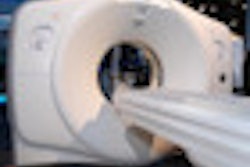This information will enable more accurate minimal-prep virtual colonoscopy (also known as CT colonography or CTC), they said.
"We believe that computer-aided detection could be used for effective interpretation of noncathartic CT colonography, but problems such as partial-volume fecal tagging artifacts complicate precise detection of subtle lesions in such cases," said Janne Nappi, PhD. "Therefore, we are investigating the use of multienergy CT colonography to improve detection accuracy because it provides more complete information about the chemical composition of colonic materials than what is possible with conventional single-energy CT colonography."
The study team looked at 37 patients with suspected colorectal lesions who underwent a one-day magnesium citrate minimal bowel prep. Group A (12 patients) also ingested iodine and barium, while group B (25 patients) drank noniodinated iodine only. All underwent dual-energy CTC reconstructed with 1-mm slice thicknesses, and the exams were interpreted by expert readers.
The automated multienergy CAD scheme was trained on group A and tested on group B, a conventional CAD scheme was applied to virtual single-energy scans, and the two sets of results were compared. The per-lesion (per-patient) sensitivity of the multienergy CAD was 100% for lesions 10 mm or larger at a median of eight false positives per study, significantly higher than that of conventional CAD.
"Computer-aided detection for multienergy CT colonography can yield clinically acceptable detection accuracy for significant colorectal lesions, and it can outperform conventional computer-aided detection in minimal-preparation CT colonography," Nappi said. "The detection accuracy is improved because flat lesions and small polyps can be differentiated from partial-volume tagging artifacts more precisely than with single-energy CT. Therefore, CAD for multienergy CT colonography could represent the future of noncathartic CT colonography and colorectal screening."



















